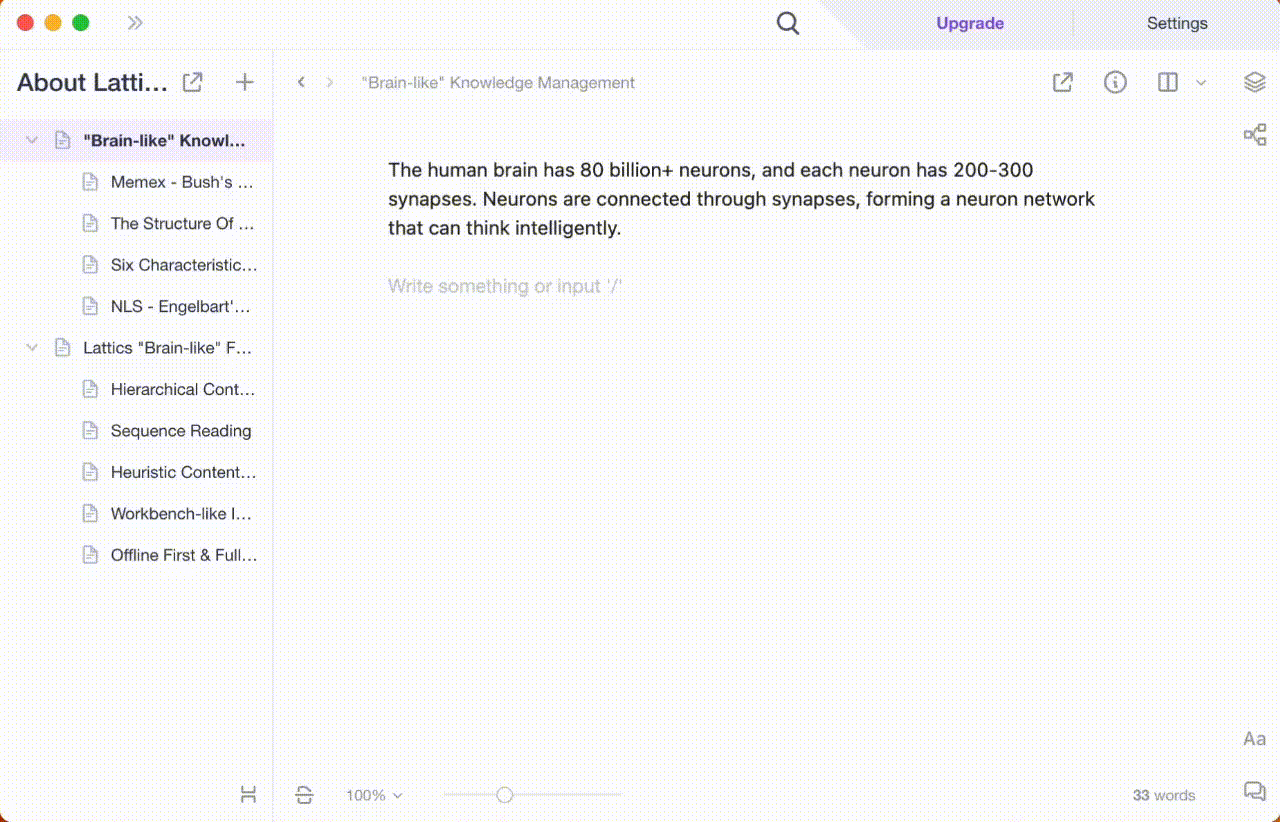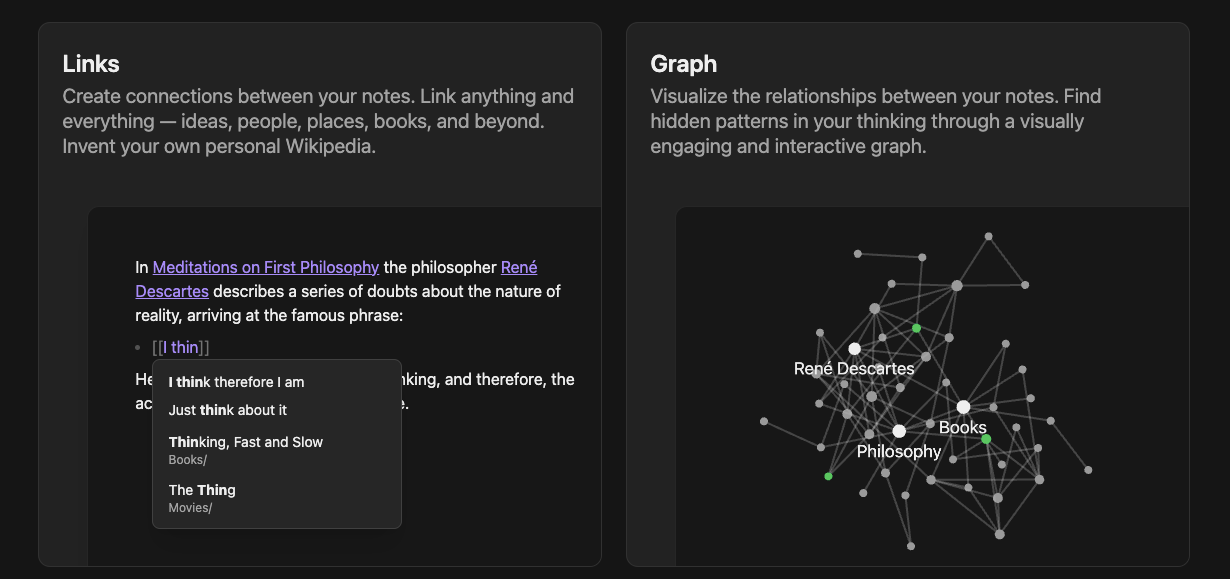Lattics Review - I prefer it to Obsidian
Lattics is a PKM app that emulates brain-like interlinked concepts storage, supporting flashcards, atomic notes, mind maps, and the Zettlekasten note-taking method. It also integrates CODE and PARA productivity frameworks.

In an era where information overload is a constant challenge, having an efficient and reliable tool to manage and organize knowledge can be a game-changer. Enter Lattics - a brain-like Personal Knowledge Management (PKM) application that claims to revolutionize the way we capture, organize, and access information. In this review, we will explore the key features of Lattics and evaluate its effectiveness for students, working professionals, and creators.
Introduction
Lattics is developed by Aura Marker Studio is an independent product innovation firm. Lattics is a new personal knowledge management (PKM) app that aims to help users capture, organize, and access information like a “second brain”. It utilizes proven methods like flashcards, atomic notes, and mind mapping to facilitate learning and ideation. In this post, we’ll explore Lattics’ key features and evaluate its usefulness for students, professionals, and creators.
Understanding Lattics
Lattics is inspired by evergreen note-taking techniques like zettelkasten and PARA method. The app is designed to be:
- Brain-like - Mimics how our brain stores interlinked concepts and ideas
- Flexible - Allows capturing thoughts in multiple formats like flashcards, notes, mind maps
- Powerful - Enables quick recall, ideation, writing with linked notes
- Private - Works completely offline to secure user’s data
Lattice’s Unique Approach
One of the standout features of Lattics is its “Brain-like” approach to knowledge management. By mimicking how our brain works in storing and retrieving information with interconnectedness and associations, Lattics aims to enhance the efficiency of learning and working processes. This unique approach sets it apart from many traditional note-taking apps available in the market.
Lattics “Brain-like” Function Overview
Card-like Content Storage
Lattics provides a library of cards where messy, fragmented information can be stored. Cards can be dragged from the card library into the project outline to become articles; and they can also be cited in articles and become part of the body content.

Hierarchical Content Relationship Network
In Lattics, an article can appear in an infinite number of projects, and a card can be cited in an infinite number of articles. The position of the article in the project outline is also completely free, it can be dragged and placed at any level and any position in the outline.

Writing Schedule Management
Lattics provides convenient functions for managing the progress of your writing:
- Goal Setting: Writing goals can be set for projects and articles, such as the total number of words written, deadlines; it can also be set to reach the average number of words written per day within a certain period of time.
- Check the progress: You can check the progress of projects and articles that have set goals, intuitively understand the gap from the goal, and set the daily word count expected to reach the goal.
- Statistics: You can count the total number of words written every day, week and month, and the number of completed and unfinished chapters.
Focus on Writing
Lattics provides a focus mode for users who want to concentrate on their writing. When this mode is activated, the editor is displayed in full screen, hiding other interfaces such as the project list, project outline, and card library to minimize distractions.
Sequence Reading
Lattics also offers a sequence reading feature. After writing a section of content, users can enable sequential reading in their project outline to chain together chapters they’ve already written. This allows them to read through their work and see the details of the transitions between chapters. In sequence reading mode, WYSIWYG (What You See Is What You Get) editing is also possible.
Block-based Editing
Unlike traditional note-taking apps, Lattics takes a block-based approach to editing. Each paragraph is a block, and each block can be dragged and moved. Block elements supported by Lattics include body text, headings, to-do lists, number lists, bullet lists, quotes, dividers, pictures, tables, code blocks, math equations, etc. To add a block, users need to type / in a blank line, which will expand the menu of block elements. They can then click one of the block elements to complete the addition operation.
Comments, Footnotes, Revisions and Historical Versions
In the writing process, it is often necessary to repeatedly review and revise the text. For papers and non-fiction works, footnotes are often needed. Lattics provides several functions to support these steps:
Comments
In the text, users can select a certain part and add comments via the right-click menu. The added comments will be listed in the space on the right side of the article, making them easy to view, modify, and delete at any time. When the mouse hovers over the comments, the corresponding text in the article will be highlighted.
Footnotes
Footnotes can be added to the text using the [^ syntax or the / menu. The added footnote also exists as a card, and its content can be modified at any time without affecting the text. The footnote can also be reused.I personally love how the foonotes appear on the side rather than the bottom of the page in typical MD documents.

Flashcards
Flashcards help memorize and quickly recall key ideas. Lattics makes creating flashcards easy with keyboard shortcuts (Ctrl/Cmd+N). Flashcards can be linked to notes and mind maps. Reviewing them repeatedly aids retention.

Atomic Notes & Zettlekasten Method
Atomic notes capture a single concept or idea. Lattics implements atomic note-taking via the Zettlekasten method. Notes are linked using tags and links to create a conceptual web. This facilitates ideation and writing.
Mind Maps & Aerial View
Lattics allows creating beautiful mind maps to get a high-level overview of notes. The Aerial View displays the entire knowledge base as an interactive mind map. It provides insight into connections between notes.

Using Lattics for Ultra-productivity: CODE & PARA Methods
Lattics incorporates proven productivity frameworks like CODE (Capture, Organize, Distill, Express) and PARA (Projects, Areas, Resources, Archives).
- CODE transforms fleeting ideas into structured writing through successive refinement.
- PARA provides a systematic way to organize notes into actionable projects.
These methods enable users to manage knowledge efficiently and turn it into published work.
Lattics for Students
For students, Lattics is a game-changer. Key use cases include:
- Researching - Mind maps help structure research notes and papers
- Studying - Flashcards aid memorization and recall of concepts
- Note-taking - Atomic notes help take smart class notes
Lattics saves time spent organizing notes and studying. Students can spend more time learning and retain information better.
Lattics for Working Professionals & Creators
Lattics is invaluable for professionals and creators who handle lots of ideas and knowledge.
- Writers can use PARA method to organize research and write effectively.
- Programmers can plan projects and pseudocode using mind maps.
- Consultants can apply CODE framework to synthesize insights from client work.
The ability to quickly capture, structure and re-find knowledge helps boost productivity.
Final Thoughts on Lattice’s Functionality & Usability
Lattics modernizes personal knowledge management using proven techniques like atomic notes and mind mapping. The app strikes an excellent balance between power and simplicity.
The fluid workflows, offline-first approach, and polished UI create a delightful user experience. While still relatively new, Lattics has strong potential to become a leading tool for knowledge workers and lifelong learners. It’s definitely a notch above many traditional note apps.
Those seeking an integrated environment to capture, structure and transform knowledge should give Lattics a spin. Its unique brain-inspired approach could upgrade how you learn and work.
Pros
- Fluid workflows - Drag-drop, linking, transclusion makes note-taking frictionless
- Offline-first - Secures your intellectual property on your device
- Polished UI - Clean, uncluttered interface optimized for focus
- Atomic notes - Zettelkasten method facilitates connections between ideas
- PARA method - Structured system to organize notes into projects
- Mind maps - Help get visual overview and see relationships between concepts
- Free version - Generous free plan with all key features
Cons
- Web version lacking - No browser-based version reduces accessibility
- Steep learning curve - Understanding PARA system takes time
- Mobile app needed - Limited mobile support affects convenience
- No collaboration - Individual-only usage, no collaboration features
- New product - Potential bugs and stability issues as an early-stage product
- Terrible Support - I emailed them a couple of times and received incomplete answer, leaving me to fend for myself.
- Less Keyboard Shortcuts - Basic thing like entering the Focus mode or adding another pane is not available as Keyboard shortcuts.
Verdict
Lattics modernizes personal knowledge management through a brain-inspired approach. The seamless workflows, structured note-taking, and focus on privacy set it apart from traditional note apps. For individual users who rely heavily on working with unstructured information, Lattics is a robust tool worth exploring. The offline-first architecture and support for notes, flashcards, and mind maps make it versatile for learning and knowledge work. While early in its lifecycle, Lattics shows immense promise to become a leading PKM solution.
Pricing and Availability
Lattics is currently available on Mac, Windows, and Linux platforms. A free version can be downloaded from the Lattics website. It provides access to most key features.
A Pro version is also offered at a price of $3.99/month or $39.99/year. The Pro plan enables additional benefits like offline backups, project exports, priority customer support, and coming soon features.
For teams and enterprise usage, custom pricing plans are available on request. Discounted educational pricing is also offered for students and teachers.
Conclusion
Lattics aims to augment human intelligence by modeling knowledge the way our brain does - as a web of interconnected ideas. With its unique approach to personal knowledge management, Lattics has the potential to become a leading PKM tool of the future. It brings new ideas like the PARA method and atomic note-taking to the table.
If you handle lots of unstructured information daily, Lattics could provide the integrated environment you need to capture, structure, retain, and transform knowledge. The app excellently balances power with simplicity. While more features are in development, Lattics seems poised to upgrade how students learn, professionals work, and creators ideate. Its brain-inspired workflows are definitely a cut above traditional note-taking apps. Knowledge workers and lifelong learners should give Lattics a try to take their PKM to the next level.



Comments ()